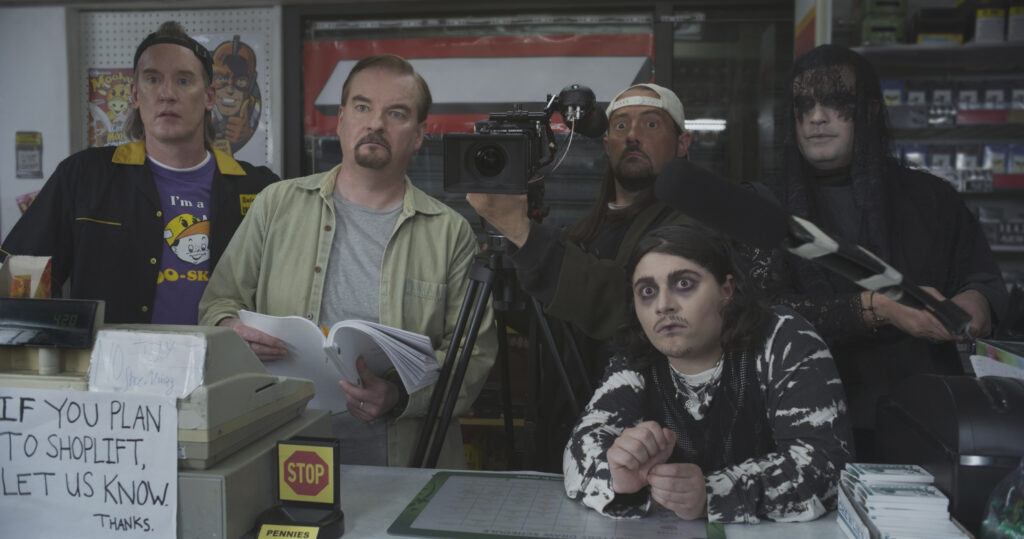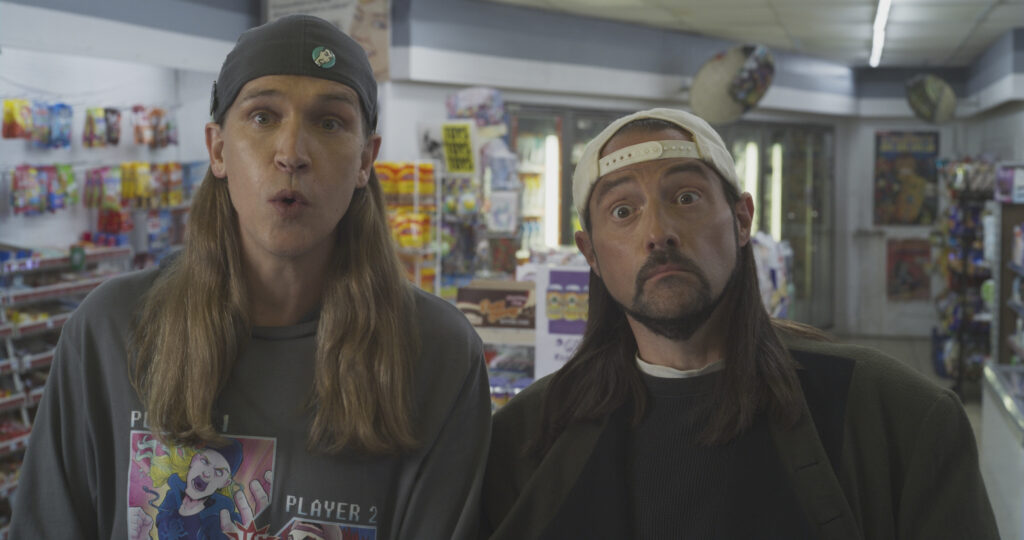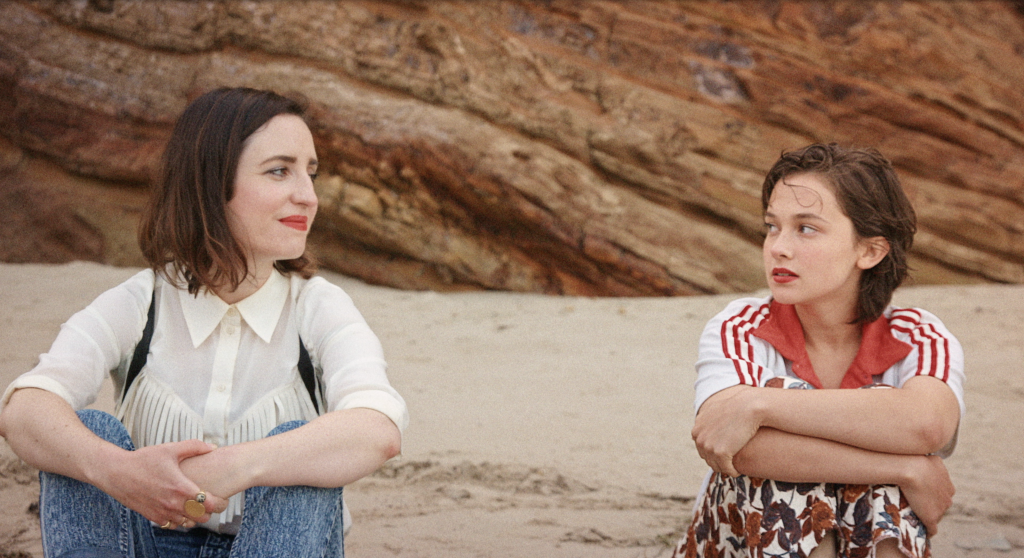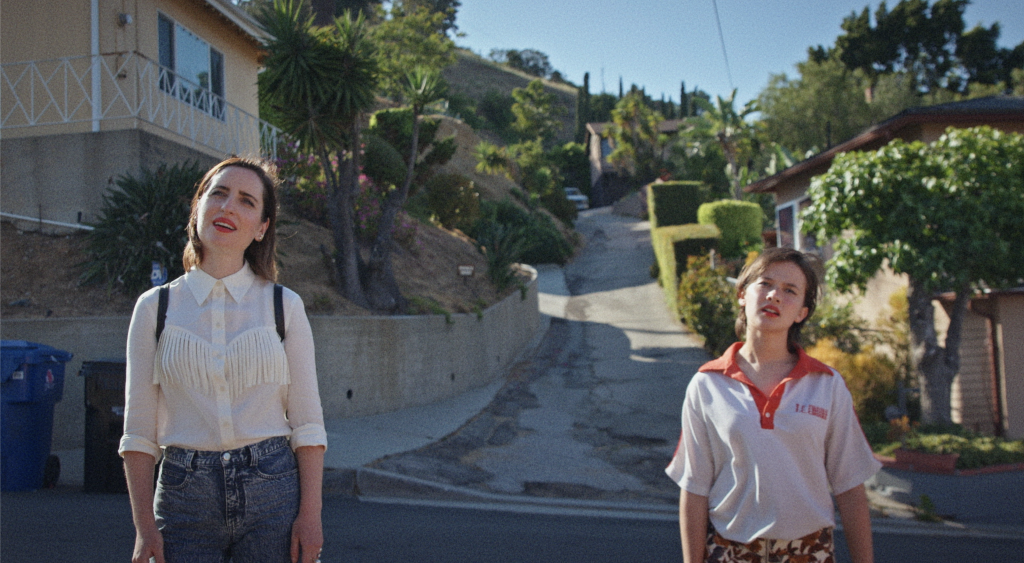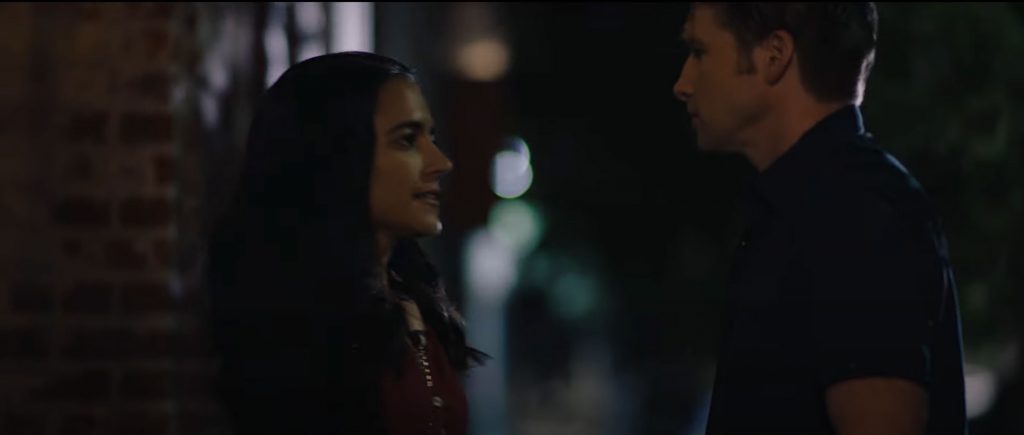April 4, 2023
by Carla Hay

Directed by Aaron Horvath and Michael Jelenic
Culture Representation: Taking place in New York City, and in the fictional Mushroom Kingdom and the Dark Lands, the animated film “The Super Mario Bros. Movie” (based on Nintendo’s “Super Mario Bros.” games) features a cast of characters that are humans and talking creatures.
Culture Clash: Bumbling brother plumbers Mario and Luigi are unexpectedly transported to a magical world, where Luigi is captured by an evil turtle, and Mario teams up with various allies (including a feisty princess) to try to rescue Luigi.
Culture Audience: Besides appealing to the obvious target audience of “Super Mario Bros.” franchise fans, “The Super Mario Bros. Movie” will appeal primarily to people who are interested in watching animated films that have simple and amusing plots.
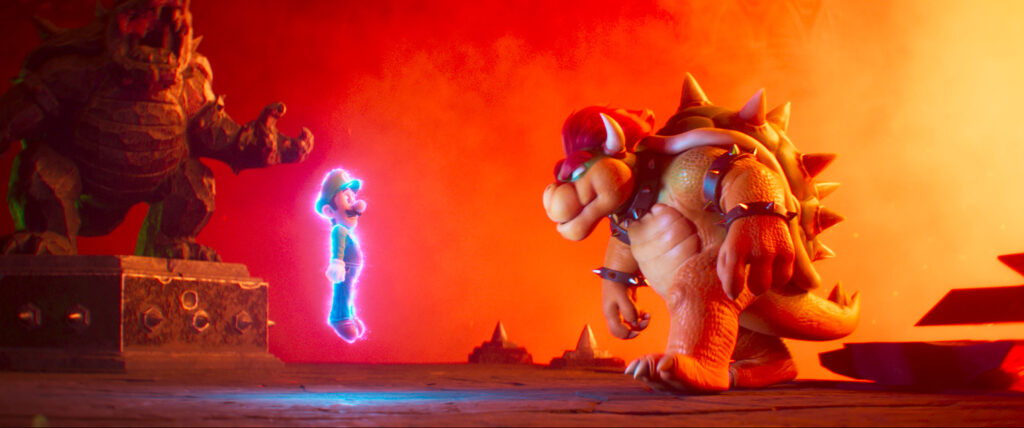
“The Super Mario Bros. Movie” is entirely predictable but still entertaining, thanks to its playful comedy, appealing visuals and talented voice cast. Jack Black is a scene stealer as turtle villain Bowser. You don’t have to know anything about Nintendo’s “Super Mario Bros.” games in order to enjoy this movie. “The Super Mario Bros. Movie” is the very definition of an undemanding crowd pleaser that can appeal to a variety of age groups.
Directed by Aaron Horvath and Michael Jelenic, “The Super Mario Bros. Movie” (written by Matthew Fogel) is an origin story of what is obviously planned to be a series of movies. The beginning of the film shows a battle in a magical world where a king and his army defending the royal palace from an invader. Fans of the “Super Mario Bros.” games will know who these characters are already. The movie later shows these characters again in more detail.
Back on Earth, viewers see two brothers who are plumbers. Confident older brother Mario (voiced by Chris Pratt) and his neurotic younger brother Luigi (voice by Charlie Day) have recently launched a plumbing business together in their hometown of New York City, where they are based in the Brooklyn borough. The brothers have proudly filmed a TV commercial for their new business. They have spent their life savings on this commercial.
Not everyone is impressed with this commercial. At a local diner, a wrecking crew employee named Spike (voiced by Sebastian Maniscalco) makes fun of the commercial. Luigi says defensively, “It’s not a commercial. It’s cinema.” Spike also thinks it was foolish for Mario and Luigi to quit their day jobs to start this new business.
The brothers have a large family that includes their father (voiced by Charles Martinet), their mother (voiced by Jessica DiCicco), the brothers’ Uncle Tony (voiced by Rino Romano) and the brothers’ Uncle Arthur (voiced by John DiMaggio), and not all of these relatives are supportive of the brothers’ new business venture. (Martinet does the voices of Mario and Luigi in the “Super Mario Bros.” video games.) During a family meal at a dining table, Mario and Luigi have to endure some taunting, especially from their uncles, who think that the brothers’ plumbing business will fail. The brothers’ mother is supportive though.
“The Super Mario Brothers Movie” shows the brothers going on their first plumbing job since their new business opened. It’s a house call to fix a leaking bathroom sink faucet. And the job is a disaster, involving a major mishap with an unfriendly dog named Francis. By the time the brothers leave the home, the sink hasn’t been fixed and the home has a lot of damage to it.
Not long after this plumbing fiasco, the brothers see on the local TV news that parts of Brooklyn have been flooded because a major water main has broken. Mario and Luigi rush to the scene to see if they can help. The brothers end up in a giant underground tunnel and unexpectedly get whisked through a portal that transports the brothers to a magical world.
However, the brothers land in different places in this magical world. Mario lands in the Mushroom Kingdom, which s populated by inanimate giant mushrooms and small talking mushrooms, all with polka dots. The talking mushrooms are called Toads, Mushroom People or Mushrooms. Luigi lands in a desolate forest area called the Dark Lands, full of dead trees. Luigi is soon abducted by the movie’s chief villain: a spike-wearing giant turtle named Bowser (voiced by Black), who wants to take over the Mushroom Kingdom and marry Princess Peach (voiced by Anya Taylor-Joy), the human ruler of the Mushroom Kingdom.
“The Super Mario Bros. Movie” includes Mario finding his way around the Mushroom Kingdom with the help of a friendly mushroom named Toad (voiced by Keegan-Michael Key), who is Princess Peach’s loyal attendant. Some hijinks ensue when Mario is perceived as an untrustworthy intruder by certain people in the Mushroom Kingdom. Mario eventually meets the princess, who has her own story of how she ended up in the Mushroom Kingdom.
In addition to rescuing Luigi, the heroes of the story also have to fight off an invasion from Bowser and his army, which includes Kamek (voiced by Kevin Michael Richardson), who is Bowser’s menacing and most dutiful henchman. Along the way, Princess Peach and Pario have to convince the powerful Kong army of primates from the Jungle Kingdom to help defeat Bowser. That’s how Mario meets the king Cranky Kong (voiced by Fred Armisen) and his immature son Donkey Kong (voiced by Seth Rogen), who is a powerful but goofy warrior.
“The Super Mario Bros. Movie” has enough touches of dark comedy to keep it from being annoyingly overloaded with juvenile jokes. Making a cameo in the movie is the cyan Luma character named Lumalee (voiced by Juliet Jelenic), who has a star-shaped, flame-like physical appearance that makes her look like she’s a cute and upbeat character, but she spews a lot of pessimistic comments that unnerve those who are around her. Bowser has a secret desire to be a heavy metal rocker who can belt out power ballads, so there are a few hilarious scenes showing him privately singing corny love songs that he wrote for Princess Peach while playing the piano.
“The Super Mario Bros. Movie” leans heavily into nostalgia for the 1980s, because Nintendo’s “Super Mario Bros.” games were launched in that decade. Most of the movie’s prominently placed pop songs are from the 1980s. They include Beastie Boys’ “No Sleep Till Brooklyn,” a-ha’s “Take on Me” and Bonnie Tyler’s “Holding Out for a Hero.” Brian Tyler’s competent musical score for “The “Super Mario Bros. Movie” keeps things moving along at a zippy pace with some nods to 1980s-inspired synth music.
The movie’s visuals have all the characteristics of above-average animation using modern technology, but the designs and hues of the characters and locations are throwbacks to 1980s animation and the original Nintendo “Super Mario” games. All of it is proof that any movie version of the “Super Mario” video games is better as animation, rather than as a live-action movie. (The less said about 1993’s awful live-action “Super Mario Bros.” movie, the better.)
“The Super Mario Bros. Movie” has a well-cast ensemble, with everyone doing their parts to be engaging in their performances. As the chief villain Bowser, Black is the standout performer, because he gives this villain a larger-than-life personality that will make viewers anticipate what Bowser will say and do next. There’s also a part of the story where Bowser shows he’s not just a two-dimensional antagonist: He really is kind of lovelorn over Princess Peach.
“The Super Mario Bros. Movie” isn’t without flaws. The movie has a world where there are very few female characters. Princess Peach is the only female character in the movie with a prominent speaking role. There’s really no good excuse for why the filmmakers couldn’t create more than one female character to have significant roles in the adventure parts of the story. Some viewers might also dislike how brothers Mario and Luigi are not together for the vast majority of the movie.
“The Super Mario Bros. Movie” has a very formulaic story that is watchable because the characters have their share of charm. The movie has a mid-credits scene featuring Bowser and an end-credits scene that hints at what a sequel’s plot might be. There are no real surprises at all to “The Super Mario Bros. Movie,” which does not reinvent anything from the Nintendo games, and it’s not a groundbreaking animated film. For fans who have been anticipating this movie, think of it as the cinematic equivalent of comfort food for “Super Mario Bros.” enthusiasts and people who want to see lightweight, escapist animation.
Universal Pictures will release “The Super Mario Bros. Movie” in U.S. cinemas on April 5, 2023.

